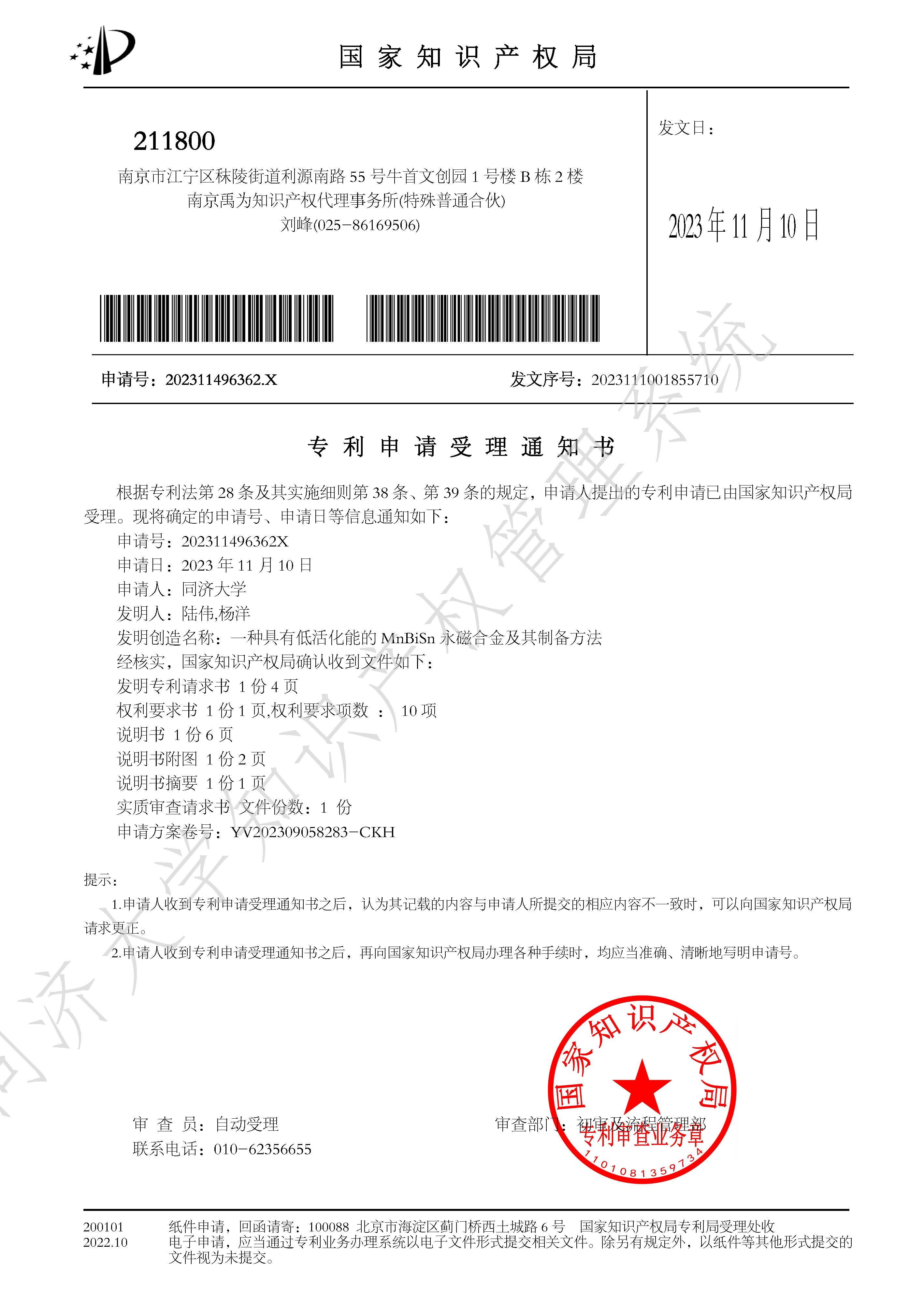Mn基永磁材料因具有价格低廉、性能优异等特点的而备受关注。特别是,MnBi永磁合金具有较大的磁能积、较高的矫顽力以及正的矫顽力温度特性。这一独特的性能使其应用于混合动力电车以及风力发电机等高温领域。因此,MnBi永磁合金是目前最具有应用潜力的无稀土永磁材料之一。但是,MnBi合金最大磁能积远小于其理论值。MnBi合金的最大磁能积主要与剩磁和矫顽力相关。MnBi低温相是通过Mn元素和Bi元素间的包晶反应生成的,在凝固过程中Mn元素易发生氧化和偏析,从而抑制了MnBi低温相的形成,使得MnBi合金的饱和磁化强度以及剩磁较低。对于矫顽力来说,可以通过球磨等手段细化晶粒提高矫顽力,但也会导致MnBi低温相的分解。因此,如何减小低温反应的活化能,促进MnBi低温相的生成,在增加矫顽力的同时保证饱和磁化强度值是目前迫切需要研究的问题。
Mn-based permanent magnet materials have attracted much attention because of their low price and excellent performance. In particular, MnBi PM alloys have a large magnetic energy product, high coercivity, and positive coercivity temperature characteristics. This unique property makes it suitable for high-temperature applications such as hybrid electric trams and wind turbines. Therefore, MnBi PM alloys are one of the most promising rare-earth-free PM materials for current applications. However, the maximum magnetic energy product of MnBi alloys is much smaller than its theoretical value, which is mainly related to the remanent magnetization and coercivity, and the low-temperature phase of MnBi alloys is generated through the encapsulation reaction between Mn and Bi elements, and the oxidation and segregation of Mn elements during the solidification process inhibits the formation of the low-temperature phase of MnBi alloys, which results in the low saturation magnetization and remanent magnetization of MnBi alloys. low. For the coercivity, the coercivity can be improved by refining the grain through ball milling and other means, but it will also lead to the decomposition of the low-temperature phase of MnBi. Therefore, how to reduce the activation energy of the low-temperature reaction, promote the generation of the low-temperature phase of MnBi, and increase the coercivity while ensuring the value of the saturation magnetization strength is an urgent research problem.
